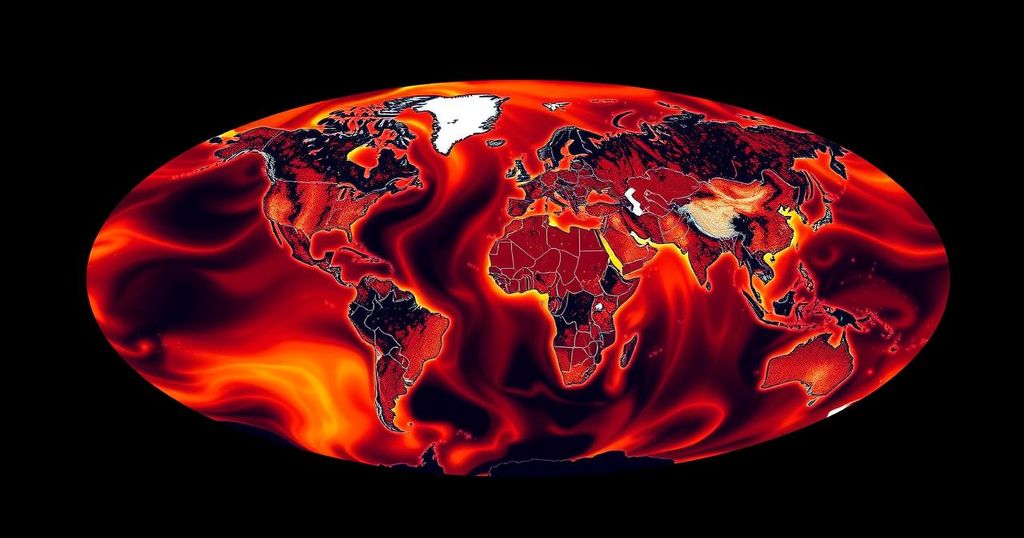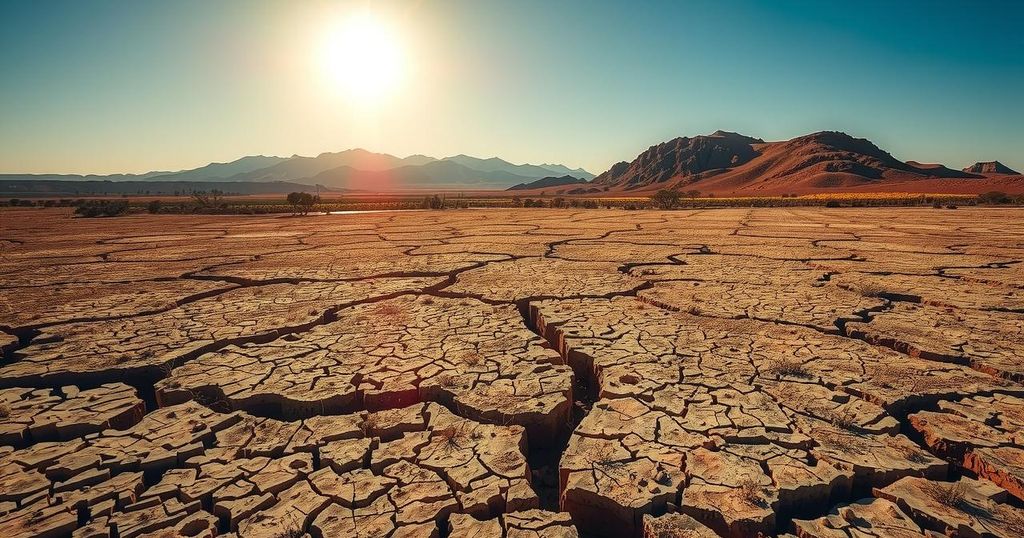Record Greenhouse Gas Levels Lock in Decades of Global Warming
In 2023, the World Meteorological Organization reported record levels of greenhouse gases, with carbon dioxide reaching 420 ppm, a concentration not seen for millions of years. This trend signifies an inevitable rise in global temperatures, even if net-zero emissions are achieved. The persistence of greenhouse gases, driven by natural phenomena and human activities, exacerbates the climate crisis. The WMO’s findings are crucial as global leaders prepare for the Cop29 climate summit, highlighting an urgent need for action against climate change.
In 2023, the concentration of greenhouse gases in the Earth’s atmosphere reached unprecedented levels, as reported by the World Meteorological Organization (WMO). This alarming data indicates that atmospheric carbon dioxide climbed to 420 parts per million (ppm), a figure not seen for three to five million years, a period during which global temperatures were approximately 3°C higher and sea levels were up to 20 meters higher than they are today. The WMO’s report, made public in anticipation of the upcoming Cop29 climate summit in Azerbaijan, warns that these elevated levels of greenhouse gases will inevitably lead to future temperature increases, even if global emissions are reduced to net zero. The secretary-general of the WMO, Celeste Saulo, stated, “Another year. Another record. This should set alarm bells ringing among decision makers. We are clearly off track to meet the Paris Agreement goal of limiting global warming to well below 2°C.” The report highlights that atmospheric carbon dioxide increased by 2.3 ppm last year, marking the twelfth consecutive year of such rises, resulting in CO2 levels that are 151 percent higher than those recorded during pre-industrial times. Natural phenomena, such as El Niño, along with extensive vegetation fires and ongoing fossil fuel emissions, played a significant role in driving up CO2 concentrations. The efficacy of natural carbon sinks, including forests and oceans, has diminished, forming a “vicious cycle.” The WMO’s deputy secretary-general, Ko Barrett, remarked, “Climate change itself could cause ecosystems to become larger sources of greenhouse gases.” In 2023, global carbon emissions from fires were 16 percent above the average, exacerbated by record wildfire seasons in Canada and extreme dryness in Australia, which recorded its driest August to October period on record. Methane levels were found to be at 1,934 parts per billion, which is 265 percent higher than pre-industrial levels, while nitrous oxide reached 336.9 parts per billion, a rise of 125 percent. The analysis indicates that nearly half of CO2 emissions are retained in the atmosphere, with around one-quarter absorbed by oceans and about 30 percent by land ecosystems. However, factors such as El Niño and La Niña significantly affect this annual carbon uptake. The WMO’s findings signify an urgent call for global action, particularly as greenhouse gases now warm the planet 51.5 percent more than in 1990, with CO2 being responsible for 80 percent of this increase. The organization emphasizes the long-lasting effects of carbon dioxide emissions on future temperatures, urging that every fraction of a degree increase carries significant consequences for humanity and the environment. As the world prepares for the discussions at Cop29 in Baku, the imperative for unified action against climate change has never been more pressing.
The report released by the World Meteorological Organization underscores a growing concern regarding climate change, as greenhouse gas levels have reached record highs that threaten to lock in decades of global warming. The data indicates significant increases in the concentration of critical greenhouse gases such as carbon dioxide, methane, and nitrous oxide, raising alarms about the Earth’s ability to mitigate climatic disruptions. This report comes at a pivotal time as global leaders prepare for the Cop29 climate summit, where policies will be discussed in the context of the Paris Agreement. The findings draw attention to the critical connection between rising greenhouse gas levels and various natural phenomena, including the effects of El Niño, thus emphasizing the necessity for collective global action to address the escalating climate crisis.
The recent findings by the World Meteorological Organization highlight an urgent climate emergency, characterized by record greenhouse gas levels that will have enduring implications for global warming, regardless of future emission cuts. The increases in carbon dioxide, methane, and nitrous oxide levels demand immediate attention and action from international leaders, especially as discussions unfold at the upcoming Cop29 climate summit. It is essential to acknowledge the interconnectedness of climate change effects on ecosystems and emphasize the need for effective global strategies to mitigate the ongoing crisis.
Original Source: www.rfi.fr




Post Comment